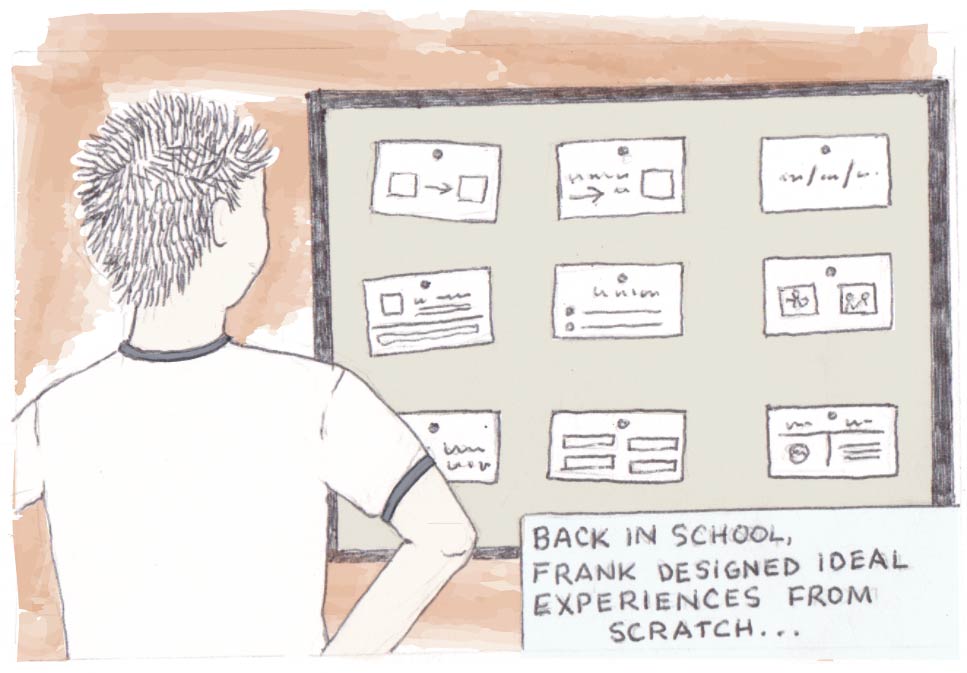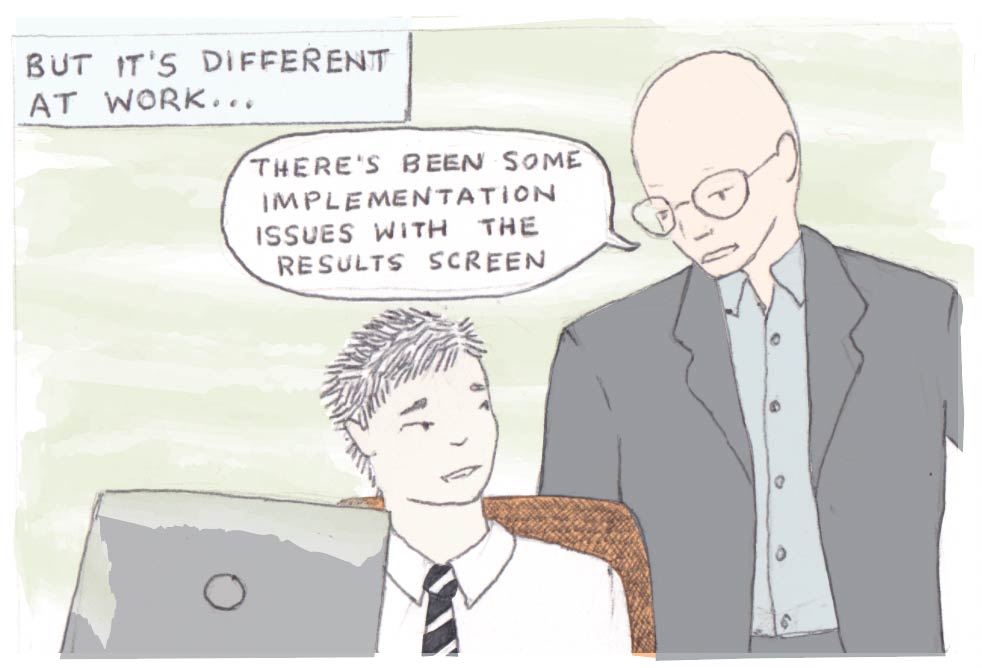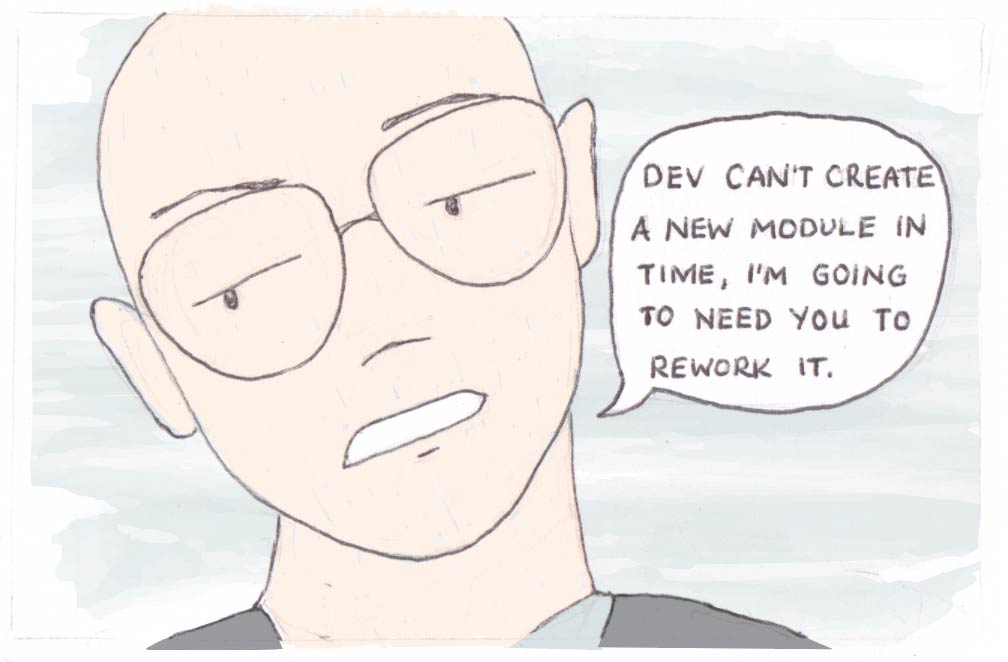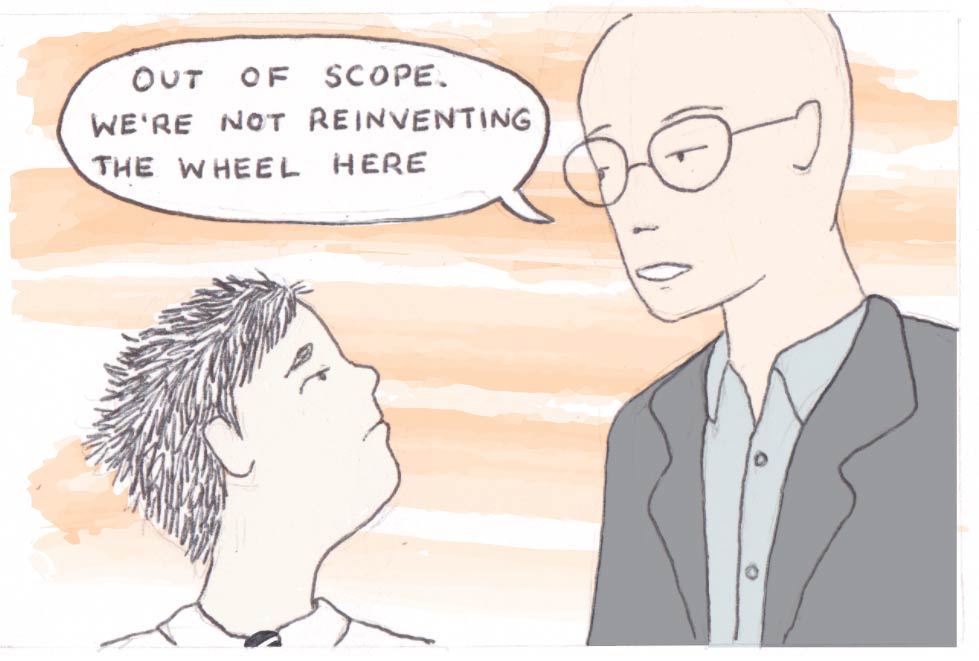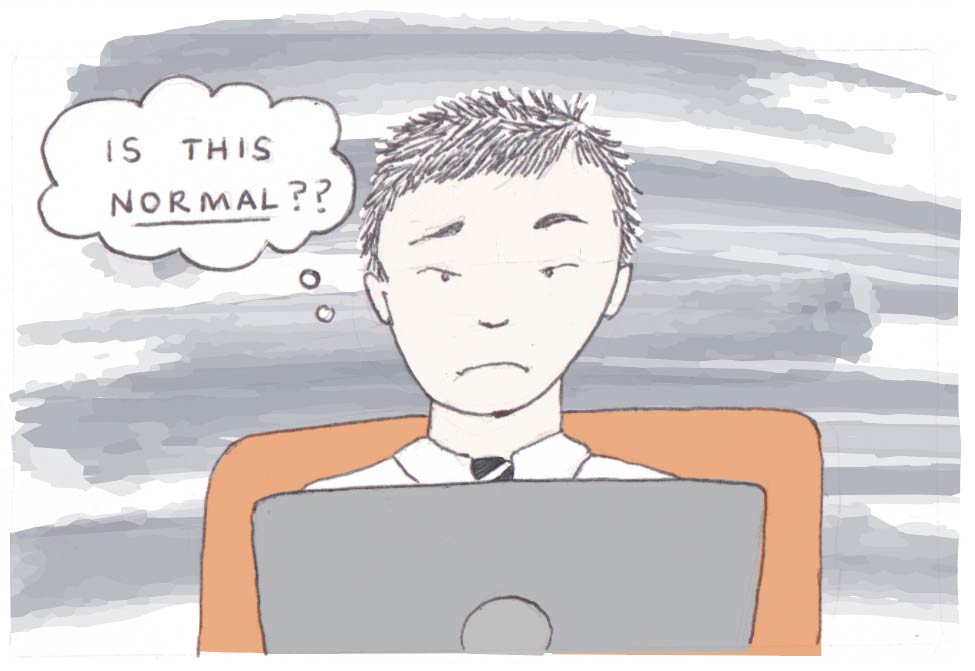Why am I always redesigning other people’s work rather than designing from scratch?
Does this situation feel familiar to you?
Here are 4 solutions we've sourced from industry pros:
- Filter
-
Org Size
- Large corporation
- Small business
- Startup
- Agency
- Freelance
-
Budget
- No budget
- Low budget
- Medium budget
- High budget
- Unlimited budget
Greenfields are Rare
Established professionals made it clear that, while it may be desirable to always be designing from scratch, IRL that’s usually not the case. In design programs, students are often challenged to create new designs, the sky’s the limit. Once on the job, students said that they were surprised that they actually spend a great deal of their time living in the nuance, trying to fix other’s designs. According to our professionals, here’s what the work is really like:
- A lot of what we do is rethinking, rearchitecting, reenvisioning existing systems. Get it to the bare minimum of what could be considered user centered design [UCD]. Microsoft has a history of engineering and has slowly been moving the needle to bring it to UX. Working within a large organization is like turning a floatilla. It very rare that we can get all the ships going in the same direction. When I worked for XBox launch - every iteration is essentially new, and there was more UCD. Designing from scratch, prototyping, that’s fun. That’s my best work but it’s rare that we get to do that. In school they should be teaching people to refine someone else’s work and make it better. We do that far more. Amy S. - Manager @ Microsoft
- Rarely do you get to go into a company and just start fresh and change things. Bryan B. - Product Designer @ General Assembly
- It would be great if all of our work was at the start of a new project and we could be creative and ground breaking – but that’s not what the job looks like. Designing a single module out of context is easy, but designing an extensible system is hard. Especially given the constraints of whatever crazy stuff already exists. It’s rarely from scratch; you will be working with stuff someone else designed. So you need to understand an existing system, then you need to think about variants. Brent M. - Former Designer @ Salesforce.com
More Resources
Expand Your Impact
Do what you can with what you’ve got. Even though your project may be to fix a very minute part of the product, you as a UXer are able to see ways you can make an impact for users. Doing a good job on the small parts can help to gain buy-in for your work. Also making recommendations that are slightly beyond the scope of the current project can show that you are thinking about the entire user experience. Lastly, if you were going to design the product from scratch, what would you do differently? Maybe there’s a way to take these ideas and make them work in reality.
- Often the project is very tightly scoped. If you’re creating a voter registration form and you’re not going to make any changes to the underlying law, then there’s a very narrow scope for work. And the question is how do we take that scope and make a thing that is, and because we are doing government work we tend to do things that either have to be created or that there’s already a demand for in some way. Our glib line is, if the law mandates that every election office mail tons of paper to people, let’s at least try to make it worth the time and money spent on it. Whitney Q. - Consultant
More Resources
Fine Tuning
Coming from school projects which often consist of large sweeping ideation sessions and pulling together quick prototypes, to work projects can be quite a dramatic shift. You are no longer working on a project for a quarter or semester, but for years you may be progressing towards small improvements on a website design. This shift to fine tuning requires patience and persistence. Rather than starting a new project each class, you will be discovering new things in a design that you have been obsessing over for years.
- I think that the idea about being wrong – about not just always following theories proposed in research but re-doing the research every time and re-learning it every time and saying, ‘We can’t just accept this, we also need to always test the truth; what we think is the case.’ And let the truth come out for each individual product. John B. - Researcher @ IAC
- Little tweaks and things like that. I worked on basically the same website since I’ve worked at Tune. I’ve only remade 4 webpages, requirements. That little stuff is way more important. Even coming up with the component library, defining page animations and empty states, it’s a huge amount of work. Trying to keep things consistent across something that is so big is a huge problem. Anna D. - UX Designer @ Tune
More Resources
Big Picture Thinking
UXers are in a unique position because we are able to see both the small details of design and also the larger contexts of use. We can watch people use technology and see both the usability issues and design possibilities that will improve people’s lives. Big picture thinking allows us to create a vision for the product, steered by the needs of the users and the business, and to lead a project to a successful completion. Every so often, pull yourself out of the details to do some big picture thinking - what do our users really want? How does our product fit into the customer’s ecosystem? What are all of the pieces that we need to put together to make this system work?
- UX Designers are a lot more about working together. A lot more around how do you take something that currently exists or an idea that people already understand and making that apply in a bunch of different contexts, or in a bunch of different ways. Which is different than what a graphic designer tends to do. Paul S. - UX Prototyper @ Facebook
- At Amazon we thought about the entire system, ecosystem. Not just a point in space. At Microsoft, we design a lot of Hollywood sets - pretty facades but nothing behind them. You need to think about the whole city. School teaches you how to think myopically about a single problem. In reality, you need to be informed by people in that city and the engineering. Look at existing work and refine. In industry, we don’t sit around doing card sorts. No one has time for that. You usually already have the IA done when you get on the project. You have to figure out, what is your north star? How are you going to take steps to get there even if you can’t ever reach it? Amy S. - Manager @ Microsoft
- We’re not hired to make screens – it’s what goes into those screens, under the surface: all kinds of processes and frameworks and workflows not visible on the screen. Matt C. - Principal @ UX Animal
- Because I’m working in nonprofit research, we can begin to see, are we doing usability testing to see if cancer.gov works well, or are we trying to see what makes a useful tool for people who are dealing with cancer? If you do that, you begin to change how your usability sessions look because you’re starting to think, hmm, maybe I am really here to learn from them in a great deal more than lip service. You know, one way to think of it is as the test person as a subject. We are studying them. And that would be psychology. The other is to say, we brought them in to run the test for us, so they’re a vehicle for the test. But the other is to say, they’re really here to help create an opportunity in which we can learn with and from them. If we reframe the question to how do we make sure that we have a the right product as well as a good product, then we have a different question on our hands. Whitney Q. - Consultant
Don't see a solution that's worked for you?
Disclaimer: Of course, we know there are no cookie cutter solutions.
Not all this advice will work for you. It really depends on your context and constraints. We have talked to dozens of established professionals to get their suggestions. Whether you're working in a startup, an agency, a corporation, or you’re going it alone, the suggestions above might help you out.

